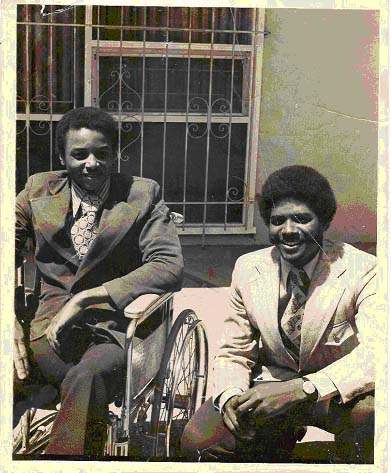For Black History Month, we’re profiling Black leaders in the disability rights movement. Check back all month for more!
Brad Lomax (1950-1984), a Civil Rights leader and disability rights activist, brought together the two movements to present a united front in the fight for equity.

Brad and Glenn Lomax
Diagnosed with multiple sclerosis in his teens, Lomax founded the Washington, D.C. chapter of the Black Panther Party (BPP) and organized the first African Liberation Day demonstration in 1972. A move to Oakland, California, where Lomax was unable to access public buses without being physically lifted onto them, launched his participation in the disability rights movement.
In 1975, Lomax worked with Ed Roberts, the founder of the Center for Independent Living in Berkeley, to open another CIL site in East Oakland with support from the BPP. His activism led to increased awareness within the BPP of the disability rights movement, making him the cornerstone of a partnership built on solidarity.
When, in 1977, disability rights activists staged a sit-in in San Francisco’s federal office building to urge the government to implement Section 504 of the Rehabilitation Act, Lomax was there. Alongside his fellow activists, he camped out in the building for three weeks despite the government’s decision to shut off the building’s water supply and phone lines.
When Lomax urged the local BPP to help, they quickly mobilized, delivering food and essential supplies to the protesters throughout the sit-in. According to other protesters, the sit-in would have quickly fizzled out without this assistance.
The Black Panthers covered the events extensively, drawing further attention to the cause—and they covered Lomax’s costs to travel to Washington, D.C. to put further pressure on the government. Their efforts succeeded, and Section 504 was signed into law on April 28, 1977.
While Brad Lomax sadly died at the age of 33, his legacy has lived on, paving the way for decades of activism that have radically transformed disabled people’s opportunities and access. Today, we honor him as a part of this year’s Black History Month.
Want to learn more about Brad Lomax and the 504 Sit-In? Watch Crip Camp for archival footage and essential context. Information in this highlight came from the New York Times’s 2020 feature on Lomax.
Comments are closed.